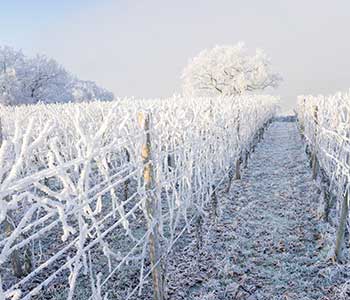
Climate change-induced snow reduction affects soil nutrients
In January 2021, Global Ecology and Conservation published the results of a Chinese study on the effects of climate change-induced winter snow reduction in the Tibetan highlands. They show that less snow favours the leaching of nutrients in the soil. At the same time, the microbial biomass remains unchanged.
January 2024
„Short-term winter snow reduction stimulates soil nutrient leaching without changing the microbial biomass in an alpine fir forest.” Global Ecology and Conservation, Volume 25, January 2021, e01434. Published on ScienceDirect, accessed on 7 January 2024.
We know how important a good winter snow cover is for the soil in our - i.e. northern - latitudes, and you can also consult a column here. On the one hand, a good snow cover acts as an insulating layer to ensure that the soil does not freeze and that soil organisms and microorganisms do not die. On the other hand, it prevents soil erosion and slowly and steadily supplies the soil with moisture as it melts. How the climate change-induced reduction of snow cover in a Tibetan fir forest affects soil nutrients was published in 2021.
To close this gap, a Chinese research team conducted a two-year snow manipulation experiment in an alpine forest in the permafrost region of the Daxing'an Mountains. They analysed the short- and long-term effects of snow removal on the bacterial soil community and enzyme activity.
The diversity of the bacterial community generally showed little sensitivity to snow removal. However, the scientists observed seasonal changes in the relative abundance of the dominant bacterial taxa (bacterial groups), especially during snowmelt and the early growing season. Snow removal had a significant influence on the bacterial community structure during these phases.
In addition, snow removal influenced the activities of soil enzymes. [Attention, here it gets specific:] Acid phosphatase increased during snowmelt. Polyphenol oxidase decreased during snow stabilisation, as did β-glucosidase during snow stabilisation and snowmelt.
The seasonal changes in the bacterial community and enzyme activity were mainly caused by fluctuations in nutrient availability in the soil. The data collected indicate that the soil bacterial community only underwent significant changes due to snow removal during the snow stabilisation, melting and early vegetation phases. These changes are accompanied by simultaneous adjustments in soil enzyme activity and growth. Previous studies have shown that the impact of seasonal shifts in environmental variables on microbial diversity is more far-reaching than the transient and mild effects of changes in snow cover.
With my amateurish view of the results, I would like to concede that it can make a difference whether a lower snow cover is caused by mechanical removal or higher temperatures. In any case, they are one more indication of the comprehensive effects of climate change, of which we can only form a vague illustration. But every realisation can bring us closer to solutions. So please get back out into the cold and continue your research!




